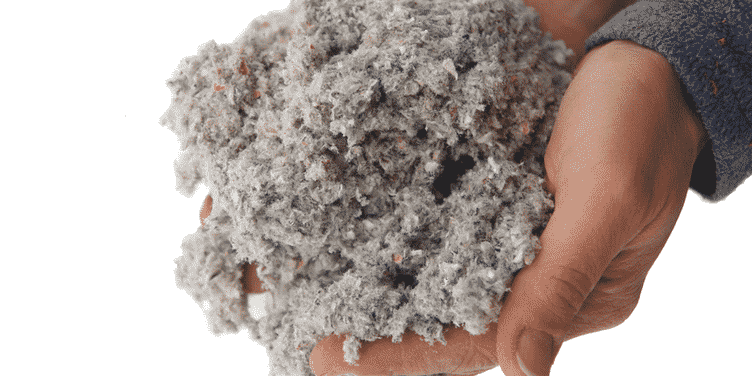Cellulose insulation is commonly used in attics because it is an affordable solution for increasing the attic’s r-value. The cellulose insulation offers better thermal resistance than fiberglass. Because cellulose is made from the natural cells of plants, it does not conduct heat; it absorbs it. Cellulose fibers are naturally resistant to moisture and will not crack in cold temperatures, which makes this type of insulation ideal for unheated attic spaces. The cellulose is made from recycled shredded paper and plant resin, making it an environmentally friendly way to insulate a home. Cellulose is rodent-resistant, which is a benefit to homeowners in areas where squirrels, mice and other critters access the attics during the winter for warmth.
The r-value of cellulose insulation is about 3.5 per inch of thickness. The efficiency of cellulose insulation makes it a top choice for use in a home’s attic or walls. The r-value of cellulose insulation are higher than other commonly used materials for attic insulation. Cellulose insulation maintains its r-value even at extremely cold temperatures.
Cellulose insulation is ideal for spraying into tight and difficult to reach areas. It is usually installed with the use of an insulation blowing machine. As a form of loose-fill insulation, it can be placed where other types of insulation such as rolls or batts cannot. To help reduce the risk or spread of fire, the cellulose fibers are treated with fire retardants before they are sprayed into the house. This adds to the protection and safety of the attic, especially if there are wires or electrical boxes underneath the area where the insulation is to be placed.


